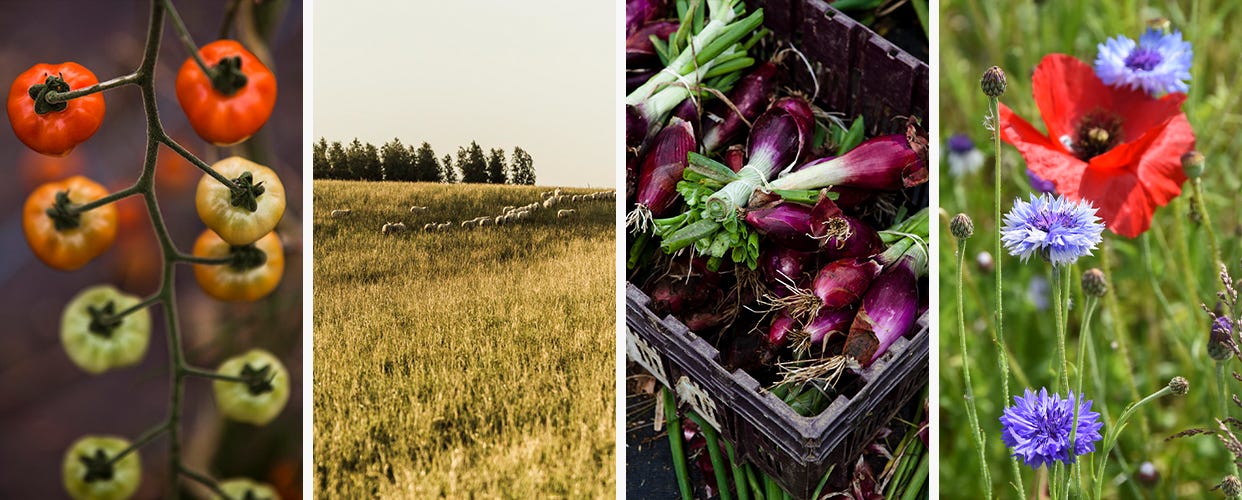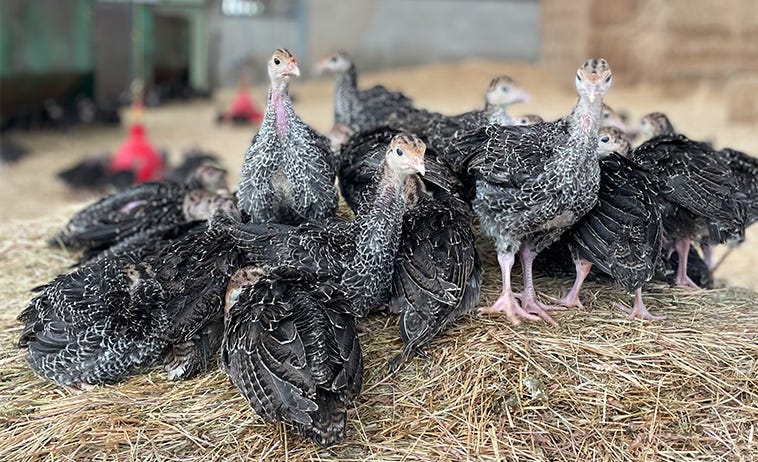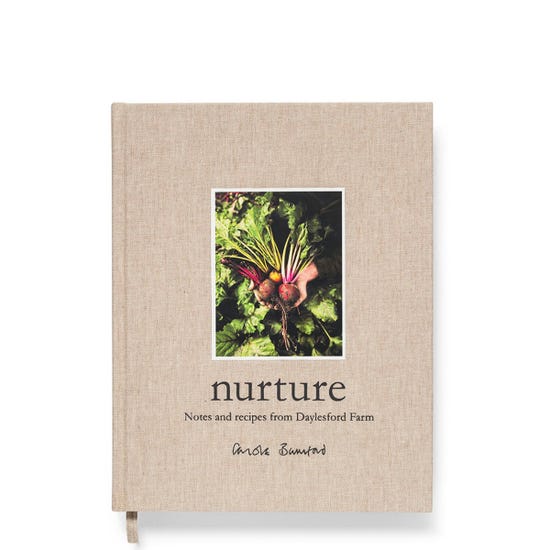
Notes from the Farm - July 2023
No.1 BUSY BEES
The 14 beehives at Wootton are now in their second year and the bees have been exceptionally productive this summer. Usually, nectar flow stops in June when the bees wait until the next blossoming plants in July, but this year they kept busily collecting nectar. So far we have harvested 120kg of honey, which filled over 400 jars. The next and final harvest will be in August and it promises to be a bumper crop.
Our herd of red deer is certified organic by the Soil Association; the rolling hills and ancient woodlands of our Wootton Estate in Staffordshire lets them live as wild a life as possible. The hinds (female red deer) are coming to the end of calving, while the stags (male deer) are growing their antlers, which can grow up to 6cm every day and weigh over 20kg when fully grown. Antlers are used to impress females, intimidate other stags and for rutting, although we prevent this to avoid damage.


Believe it or not, we’re already thinking ahead to Christmas with our traditional bronze turkey poults aged just four weeks old arriving on the farm in mid-July. They are too young to range outside so they will spend the first month in a large barn until they are big enough to range freely on their lush, organic agroforestry paddock which the farm team nickname “Shangri La”. They love roaming and finding worms, insects, snails and fallen fruit. The turkeys, like all our animals, will grow slowly to develop incomparable flavour and eating quality.


No.2 HOPING FOR SUNSHINE
We’ve finished making silage which preserves the spring grass, and soon it will be time to preserve the summer grass by making hay, which will be fed to our animals over winter. The grass, legumes and other herbaceous plants provide valuable nutrition. We must wait for a moisture content reading of 12-14% before cutting to prevent rotting, so we are looking for a two-week window of sunny, dry weather. As soon as this is forecast, we’re off, starting at first light right through until darkness falls to mow, gather and make about 800 bales from over 150 acres. We have four workers, four tractors, a mower and a baler and the task takes around a fortnight.
This year we are growing three varieties of ancient grains: einkorn wheat, emmer wheat and spelt wheat. The crops are starting to turn from green to gold and should be ready for harvesting and milling in August. We are looking forward to seeing how our in-house bakers transform it.
The varied grass, wildflowers and clover leys of our wetlands provide a great source of nutritional forage for our cattle in July and August. The wetland benefits too; grazing cattle eat the taller dominant grasses, move the soil and fertilise it, all of which helps increase biodiversity.


No.3 BUMPER CROPS
After the scorching hot, dry June, our tomato crop came early and is holding strong. We grow over 30 varieties and there are literally tonnes of fruit ripening on the tomato vines as we speak. We harvest around half a tonne each week in July and that will go up to 1t per week in August.
Heritage varieties are sensitive to splitting so we are growing more organic hybrid varieties this year, which tend to be more resilient, easier to work with and better croppers.
Chillies are a big part of summer too and we grow lots of the long, mild green variety you may recognise from kebab shops. These are not too hot and have loads of flavour; our head gardener Jez recommends whizzing 2-3 of them up in a food processer or blender with a couple of cloves of garlic, a handful of fresh coriander, a pinch of ground cardamom and cumin and enough olive oil to make a thick salsa-like condiment. Delicious tossed through potatoes, mixed with couscous with nuts and fried onions, spooned over barbecued meats and grilled vegetables or dotted onto casseroles, stews and curries.


July is all about planting and in the past month the market garden team has put 40,000 brassica plants including cavolo nero, tenderstem broccoli, Russian red kale, curly kale and purple sprouting broccoli into the ground. It rained immediately after we planted which is incredibly lucky. Often crops dry out but such regular rain has prevented that – so next time you complain about a drizzly summer, think of the farmers who may well be celebrating it.
However heavy rain presents a risk of blight which is an issue for sensitive crops like pink fir potatoes, so we always grow resilient varieties such as Twinner potatoes as well, as a bit of an insurance policy. Flowers cannot be harvested in wet weather and roses can struggle in the rain, so we are grateful for our polytunnels and general approach to growing a mixture of different things to ensure we are prepared for all conditions.


“Summer is all about slowing down. It’s about cherishing the warm days, getting outside to feel the sun on your face, and taking the time to enjoy the colours, sounds and smells that mark this time of the year. I try to be outside as much as possible. I’ll eat in the garden three times a day if I can, practise my morning yoga and meditation on the grass, and linger outside in the evening to watch the sky as the sun sets – the colours of the sunset a different tapestry each day.”



